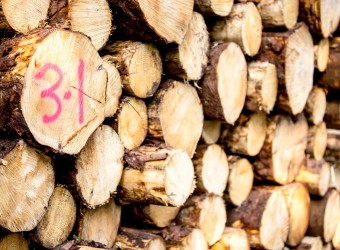News
Forestry & Land Reform
- Date20th June 2016
- AuthorHall Baird
- Categories
Don’t panic over land reform!
Land Reform has been a hot button topic in Scotland for quite some time and many connotations have sprung up around the phrase. It’s time for a brief look at what the impact may actually be on forestry ownership.
The Land Reform Act is split into twelve parts covering such diverse topics as small land ownings, deer management, Common Good land and additions to the Agricultural Holdings legislation in Scotland amongst others.
An obsession seems to have sprung up regarding transparency of land ownership and the Act has a part dealing with this. For the most part this will be of an irrelevance with only an extremely small number of people concerned about cloaking ownership. The parts of the Act that I believe will be of most interest to forest owners are the parts dealing with community engagement and the Right to Buy for sustainable development.
The devil is always in the detail and much of the detail regarding the legislation will be flushed out in secondary legislation but in basic terms communities require to be engaged in any decisions relating to the land that may affect the community. At some point the matter how remote your property, decision on your land will affect a community whether that be timber extraction traffic perhaps for more remote properties or questions over land use for communities more immediately affected.
Standards of practice will be established and providing these are adhered to and followed in an appropriate manner then the obligation will have been complied with. Much of this quite probably already takes place albeit under a different guise with the Forestry Commission and other bodies.
Of more concern is the Right to Buy by community bodies where current land ownership is hindering sustainable development. All very noble aspirations some might say. Of critical importance is the requirement that sustainable community development is being stifled. In my experience the vast majority of landowners are open and alive to development opportunities and as such these provisions are perhaps not the terror they may appear.
There will be quite specific definitions of community, sustainable development and the manner in which a landowner is acting as a barrier. There are also quite specific provisions regarding a significant community benefit. There are compensation provisions and there is an appeals procedure virtually every step of the way. The situation is somewhat more akin to a compulsory purchase as opposed to an unknown entity cherry picking the best of a landowners ownership.
It is probable there will be a challenge of the legislation by some of the significant land holding interest in Scotland as being a breach of the European Convention protocols – the right to peaceful enjoyment of your possessions.
All in all the spectre of Land Reform should not be taken as a discouragement to forestry investment in Scotland.
Published in 2016, Issue 75, Confor Forestry & Timber News.
Categories
Recent Posts
-
The New RCI Rules – W... 5th January 2021
-
Power of Attorney – D... 23rd May 2017
-
Voluntary Land Registration... 22nd September 2016
Contact Us
Hall Baird Solicitors Ltd.
The Old Exchange
Castle Douglas
DG7 1T J
E: enquiries@hallbaird.co.uk




